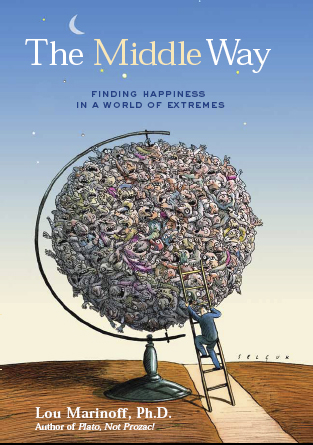July 24, 2011: I imagine so. Actually, I am trying to imagine what exactly you mean by your question. I have come up with a few imagine-ary areas in faith.
One imagine-related area deals with God. Actually, we do not really know how to draw a picture of God. But in vibrant faith, it is vital to live as if God was right, in front of us and watching every move we make.
So, in a sense, what we are really doing is imagining that God is right here.
The fact that we are imagining this does not mean that God is not actually watching, and that this is just an illusion.
It means that via imagining, we have made this presence a conscious reality rather than it being some remote abstraction.
But imagining God goes further than imagining God's presence. It extends to imagining what would be God's reaction to what we are about to do, either by commission or omission.
This actually raises the imagined presence of God to a vibrant, challenging, potentially exciting reality. What better way to ensure that we do what is proper than by imagining whether our actions or lack of them would evoke God's approval or rejection.
There is another way that we can use our imagination.
We can spend serious time imagining what the world would look like if certain unwelcome realities were eliminated, including poverty, prejudice, violence, intolerance, to name a few.
The next step would then be to imagine how potential means and strategies to address these unwelcome realities would impact on them. If in one's imagination these seem like potentially potent ways to eliminate these scourges, the next step would be to graduate from imagining to implementing.
There is hardly a more faith-imbued endeavor than to eliminate poverty, prejudice, violence, intolerance, etc. And imagination plays a prominent role in the endeavor.
 ...
...The Middle Way strikes a balance. Imagination, for Buddhists, is a legitimate and valued medium for teaching and practice.
Buddhist literature is primarily intended not to convince but rather to surprise, delight and awaken. It employs story-telling, poetry, fables, parables, fantasy and other imaginative writing to engage the emotions and the intuitive mind.
In religious practice, too, Buddhism employs the power of imagination - for example, visualization practice. In these we are invited to imagine such-and-such a figure, say the bodhisattva of compassion, KwanYin. Buddhist art has provided ample versions, so this is not difficult. We imagine her presence before us, in vivid detail. We may simultaneously repeat her name or some other verbal formula.
In some variants, we will be invited to bring this image into our own heart-region and experience ourselves containing the full power of compassion, dwelling in the center of our being. This is not play-acting, nor trance, nor fantasy for deception. This is a teaching device to help us experience ourselves as we are - connected with the presence of the most powerful energies of the universe - compassion, care-giving, healing, insight, creativity, to name a few.
For Buddhists imagination is exactly that - image-ination - the creation of symbolic imagery as teaching and practice tools. The human search for meaning takes us beyond our usual limits and so we must employ such methods as will allow us entry where the rational mind stalls or recoils. We might conclude in haiku form:
Pouring through square windows,
Errant sunlight splashes and soaks,
In purposeless play.
Blessed Pope John Paul II reminded the world of the close relationship between faith and reason in his insightful encyclical "Faith and Reason" (Fides et ratio).

Imagination, as an exercise of our gift of reason, does indeed play an important role in our lives of faith.
When God gave us the gift of reason, He endowed us with creative faculties and emotions as well.
In the practice of prayerful Christian meditation the Catechism tells us: "Meditation engages thought, imagination, emotion, and desire."
This mobilization of faculties is necessary in order to deepen our convictions of faith, prompt the conversion of our heart, and strengthen our will to follow Christ.
Christian prayer tries above all to meditate on the mysteries of Christ, as in lectio divina [literally divine reading - ED.] or the rosary.
This form of prayerful reflection is of great value, but Christian prayer should go further: "to the knowledge of the love of the Lord Jesus, to union with him" (CCC 2708).
An explicit example of the use of imagination in prayer can be found in the spirituality of the Society of Jesus.
Jesuit spirituality places a special emphasis on using the imagination in a particular way while praying to help us listen to God's guidance and to help us grow in faith.
Catholic Christians believe that faith is not just an intellectual agreement with a set of propositions because we are encouraged to bring all of ourselves before God - our intellect, our will and our imagination, too.
Imagination is a God-given gift to human beings which enriches our lives if it is anchored to a positive reality.
However, if it is based on negative feelings, it can be quite destructive. And if it is tied to false or unnatural things, it simply amounts to fantasy.
A young couple is blessed with their first child and they immediately give free rein to their imagination. They begin to think of the time when the child will go to school and then to university, get married and the couple will have the pleasure of enjoying grandchildren.
Faith is a positive force in the lives of most people. Imagination enhances many aspects of the beliefs and teachings of faith.
A simple example relates to the five daily prayers. The Holy Prophet said that we should "pray as if we see God and if we don't, He sees us."
>Whether praying in a mosque, at home or in a park, our imagination helps us feel as if we were standing in the House of God in Mecca and talking to him.

1. The Profession of faith - faith in one God, and Muhammad's status as his prophet
2. The daily prayers - five times a day
3. Fasting - from sunrise to sunset during the month of Ramadan
4. Almsgiving - by which one's responsibility for the poor of the community is satisfied
5. The pilgrimage - to Mecca, once in the course of one's life
The books end at the minaret, which can be said to point to God, and the half-moon crescent ends with another address to God, "O Merciful". The half-moon crescent encircles the symbols for God: the Kaba and a minaret, and for the prophet Muhammad: the green cupola raised over his grave in Medina. We also find the names "Allah" and "Muhammad" alternating in the small medallions within the circle round the Kabah, and intertwined beneath the circle. (Indian poster purchased in Zanzibar.)
To help us appreciate Divine unity and benevolence, the Holy Koran is replete with description of the various aspects of creation. Most of these descriptions end with an exhortation to think, consider, reflect, and so on. For example, pointing to the pair wise creation in the universe, it says: "And it is He Who spread out the earth and set thereon mountains standing firm and (flowing) rivers: and fruit of every kind.
"He made in pairs two and two: He draws the Night as a veil o'er the Day."Behold verily in these things there are Signs for those who reflect!" (13: 3).
Imagination plays an important role in human life, so it goes without saying that it plays a role in faith as well.
All of our dreams and aspirations begin in the realm of imagination and through effort and grace they become reality.
The Sikh faith has a very rich history with countless stories of service and sacrifice.
Sikh children are told these stories by their parents and they are also contained in story books, comics and now, cartoons as well.
As a child, I remember trying to imagine what it might have been like to live at the time of the gurus.
I imagined the challenges Sikh in the past faced to practise their faith and that gave me the courage to maintain my own unique appearance of uncut hair and a turban while attending school as one of the only visible-minority students.
The ultimate goal in the Sikh faith is to seek union with God and by meditating on NAAM (God's name) to reveal God's Light within.
This too requires a measure of imagination.

But the Sikh scripture, Sri Guru Granth Sahib also says that God's vision is beyond imagination and comprehension. It's something that must be experienced to be understood.
Finally, it requires imagination and vision to work toward the ideal community which the Sikh Gurus taught Sikhs to strive towards.
The Sikh faith teaches that the ideal community must be based on complete equality of all persons, regardless of faith, gender, race and economic status.
It is based on mutual respect and compassion.
Bhagat Ravidas, a saint whose compositions were included in Sri Guru Granth Sahib, describes this community as the "city without sorrow". [Begumpura - ED.]
It is this ideal community that all Sikhs imagine and strive to make a reality.
© Copyright (c) The Ottawa Citizen
